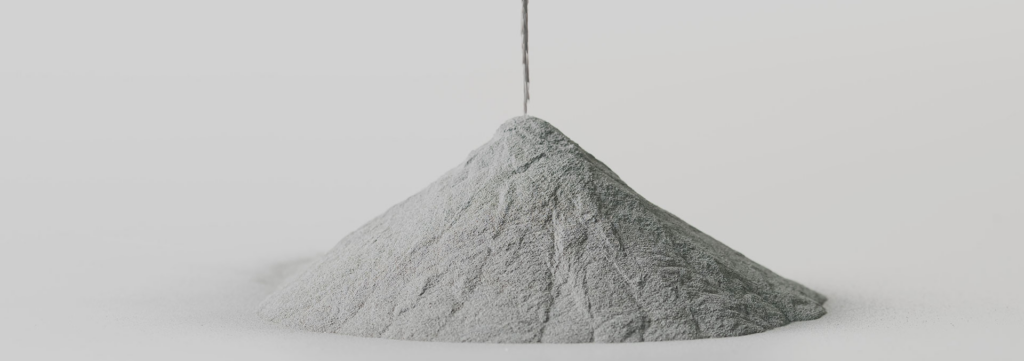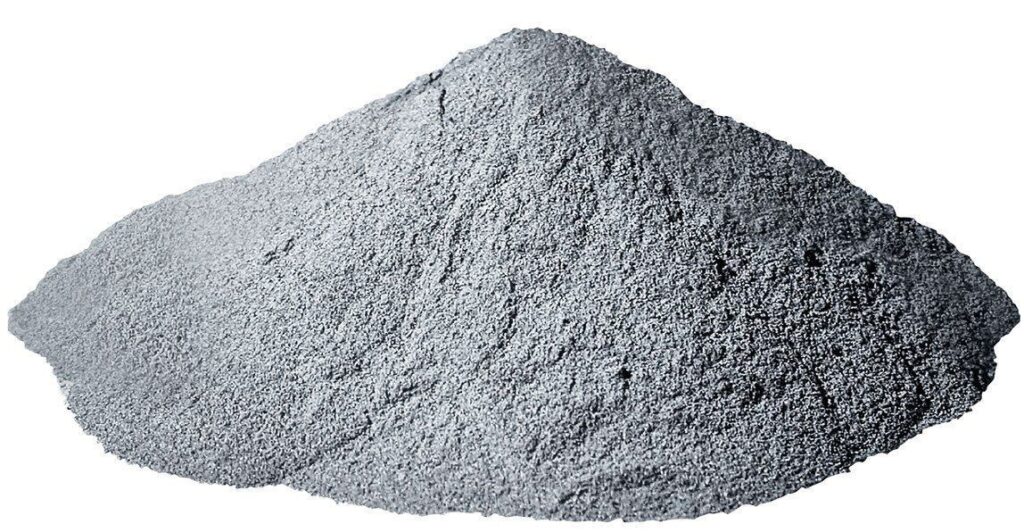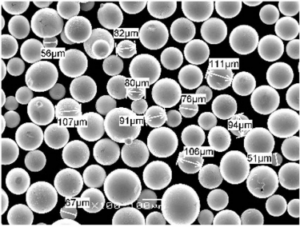Overview
Invar powder is a nickel-iron alloy powder composed of iron and nickel in proportions that result in an extremely low coefficient of thermal expansion. The name “invar” comes from the word “invariable”, referring to its stable dimensions and resistance to thermal expansion and contraction.
Invar powder has become an important material in applications requiring precision and accuracy over a range of temperatures. Its unique properties allow invar powder to be used in optical, electronic, structural, and other applications where maintaining part dimensions and clearance tolerances is critical.
This guide provides a detailed overview of invar powder covering its composition, key properties, production methods, applications, specifications, and other technical data. Comparisons are made between invar and other low expansion alloys. Supplier information, safety handling procedures, testing standards, and a FAQ section are also included.
Invar Powder Composition
Invar powder contains a range of 36-38% nickel by weight, with the balance being iron. Small amounts of other alloying elements such as manganese, silicon, and carbon may also be present.
The precise nickel content within this range is adjusted based on the desired coefficient of thermal expansion for the application. Higher nickel percentages result in lower thermal expansion coefficients.
Table 1: Typical Composition of Invar Powder
| Component | Weight % |
|---|---|
| Nickel (Ni) | 36 – 38% |
| Iron (Fe) | Balance |
| Manganese (Mn) | 0 – 0.5% |
| Silicon (Si) | 0 – 0.5% |
| Carbon (C) | 0 – 0.1% |
The iron-nickel proportions generate an austenitic face-centered cubic crystal structure that minimizes volume changes over temperature variations.
This unique behavior results from the opposing effects of nickel and iron on the alloy’s physical properties. Iron has a positive coefficient of thermal expansion whereas nickel has a negative coefficient. At around 36% nickel content, these effects counterbalance each other leading to very low net thermal expansion.

Invar Powder Properties
The defining property of invar powder is its low coefficient of thermal expansion (CTE). The CTE measures the degree of expansion or contraction per degree temperature change.
Typical values for the CTE of invar powder range from ~1.2 x 10-6/°C at 20°C to ~1.8 x 10-6/°C between 100-300°C. This is significantly lower than most other metals.
For comparison, aluminum has a CTE of ~24 x 10-6/°C and stainless steel is ~17 x 10-6/°C. This makes invar highly dimensionally stable over a wide temperature band.
Table 2: Key Properties of Invar Powder
| Property | Values |
|---|---|
| Coefficient of Thermal Expansion | 1.2 – 1.8 x 10-6/°C |
| Density | 8.0 – 8.2 g/cc |
| Specific Heat | 450 J/kg·K |
| Thermal Conductivity | 10 – 30 W/m·K |
| Electrical Resistivity | 70 – 80 μΩ·cm |
| Young’s Modulus | 140 – 145 GPa |
| Poisson’s Ratio | 0.294 – 0.305 |
| Tensile Strength | 200 – 240 MPa |
| Melting Point | 1420 – 1450°C |
In addition to thermal stability, invar powder offers:
- High strength and stiffness
- Excellent corrosion resistance
- Good electrical and thermal conductivity
- Resistance to oxidation and aging
- Ease of welding and brazing
- Capability for precision machining
The combination of properties allows invar powder to perform well in demanding operating environments. Parts maintain accuracy through temperature fluctuations and resist deformation under load.
Production of Invar Powder
Invar powder is produced via gas atomization, a process that involves melting the alloy and disintegrating the molten stream into fine droplets. High-pressure gas jets strike the metal stream, causing it to break up into spherical powder particles.
The particle size distribution is controlled through the gas flow rate, nozzle design, and other parameters. Gas atomized invar powder commonly has particle sizes ranging from 10 to 150 microns. Finer atomization can produce sub-micron powder.
Water atomization is another method used to make invar powder, typically with larger particle sizes. The molten alloy stream is shattered by high-pressure water jets.
Gas atomized powder has a smooth surface morphology compared to water atomized and exhibits better flow characteristics.
After solidification, the invar powder undergoes sieving to obtain the desired particle size fractions. It may also be annealed to relieve stresses from processing and optimize properties.
Applications of Invar Powder
The applications of invar powder leverage its extremely low and predictable coefficient of thermal expansion. It is used where maintaining part dimensions, clearance tolerances, alignment, and precision over temperature variations is critical.
Table 3: Applications of Invar Powder
| Industry | Application |
|---|---|
| Optics | Mirror blanks, reflectors, mounts, optical benches |
| Electronics | Precision resistors, substrates, seals, connectors |
| Defense | Fire control instruments, inertial guidance systems |
| Aerospace | Antennas, composite matrices, satellite and telescope components |
| Energy | Seals for fuel cells, batteries, high-temperature gaskets |
| Automotive | Oxygen sensors, fuel injection systems |
Some specific applications include:
- Mirror blanks for telescopes, microscopes, lasers, lithography, and optical metrology equipment where image stability must be maintained as temperature fluctuates.
- Precision resistors requiring tight resistance tolerances unaffected by thermal expansion and contraction. The TCR (temperature coefficient of resistance) of invar is extremely low.
- Seals, connectors, packages, and substrates for microelectronics and optoelectronics where micron-level alignment accuracy must be retained with temperature cycling.
- High precision instruments and metrology tools where dimensional calibration depends on the hardware expanding and contracting minimally over a wide operating temperature band.
- Antenna and reflector dishes that must hold precise shape for proper electromagnetic beam formation and transmission through hot and cold orbital cycles.
- Composite matrix reinforcement for space mirrors and structures requiring stiffness combined with matched CTE.
- Precision components and assemblies for satellite payloads and spacecraft systems that experience significant temperature extremes while needing to maintain alignment and functionality.
In these and other challenging applications, invar’s exceptional thermal dimensional stability provides design robustness and ensures critical performance parameters are not impacted by temperature changes.

Invar Powder Specifications
Invar powder is available in various size ranges, purities, and alloy grades tailored to different fabrication processes and end-use requirements.
Table 4: Invar Powder Size Specifications
| Mesh Size | Micron Size |
|---|---|
| -140 | Less than 106 μm |
| -100 | 150 μm |
| -325 | Less than 45 μm |
| -400 | 38 μm |
| -635 | 20 μm |
| -10 μm | 10 μm |
| -2.5 μm | 2.5 μm |
Finer invar powder is suited for additive manufacturing methods requiring flowability and packing density. Coarser powder works for conventional press-and-sinter fabrication.
Chemical purity levels range from 99% for industrial grades to 99.9% or higher for high-performance applications. Oxygen content must be kept below 50 ppm.
Custom alloys with nickel varied from 36-38% produce CTEs from ~0.9 x 10-6/°C to ~2 x 10-6/°C. Mn, Si, and C may also be adjusted.
Table 5: Invar Powder Alloy Grades
| Alloy Grade | Nickel % | CTE x 10-6/°C |
|---|---|---|
| Invar 36® | 36% | ~1.2 |
| Nilo 36® | 36% | ~1.2 |
| Pernifer 36® | 36% | ~1.2 |
| Invar 38® | 38% | ~0.9 |
International standards for chemical composition include:
- ASTM F3061 – Low Expansion Nickel-Iron Alloys for Precision Glass-to-Metal Seals
- DIN 1.3912 – Low Expansion Alloy for Seals and Precision Instrument Components
Invar Powder Suppliers
Invar powder is available from leading global suppliers of specialty metal powders. Typical pricing is between $50/kg to $120/kg based on alloy grade, powder size, and order quantity.
Table 6: Invar Powder Suppliers
| Supplier | Product Grades |
|---|---|
| Sandvik | Osprey® Invar powders |
| Hoganas | Astaloy® Invar |
| Kymera | Invar 36, Invar 38 |
| CNPC | Invar alloy powders |
| Epson Atmix | Invar fine powders |
Handling and Safety
Invar powder poses no significant health hazards. However, standard safety precautions for handling and working with metallic powders should be followed.
- Use protective gloves, eyewear, and dust masks
- Avoid skin contact or inhalation of powders
- Ensure adequate ventilation and dust collection
- Keep away from ignition sources as powder dusts can be flammable
Invar powder should be stored in closed containers in a clean, dry environment. Avoid conditions allowing oxidation or contamination from moisture.
Inspection and Testing Methods
To ensure invar powder meets specifications, a variety of testing and inspection procedures are used:
- Chemical composition – Inductively coupled plasma mass spectroscopy (ICP-MS), optical emission spectroscopy (OES), and combustion analysis determine Ni, Fe, and other alloying elements.
- Particle size distribution – Laser diffraction particle size analyzers measure powder size ranges. Sieve analysis separates particles into size fractions.
- Microstructure – Scanning electron microscopy with energy dispersive X-ray spectroscopy (SEM-EDS) reveals powder morphology, internal structure, and phases present.
- Density – Gas or water pycnometry measures powder density and compares to theoretical density.
- Crystal structure – X-ray diffraction (XRD) confirms the face-centered cubic phase and lattice parameters.
- Powder flow – Hall flowmeter funnels determine flow rate, angle of repose, and other powder characteristics.
- Thermal expansion – Dilatometry measures CTE over a range of temperatures via dimensional change tests.
- Other testing – Powder bed density, Hall flow rates, moisture analysis, oxygen and nitrogen content, tap density, and microbiological tests are performed per application specifications.
Certificates of analysis from reputable suppliers confirm invar powder meets the required grade criteria.
Invar vs. Other Low Expansion Alloys
While invar has the lowest CTE of common alloys, there are other nickel and iron-nickel alloys engineered to provide very low thermal expansion.
Table 7: Comparison of Low CTE Alloy Powders
| Alloy | CTE x 10-6/°C | Composition | Notes |
|---|---|---|---|
| Invar 36 | ~1.2 | 36% Ni, balance Fe | Lowest CTE, high strength |
| Invar 38 | ~0.9 | 38% Ni, balance Fe | Lower CTE than Invar 36 |
| Kovar | ~5.9 | 29% Ni, 17% Co, bal. Fe | CTE between Invar and steel |
| Alloy 45 | ~5 | 45% Ni, bal. Fe | Less expensive than invar |
| Alloy 46 | ~2 | 46% Ni, bal. Fe | CTE closer to invar |
| Super Invar | ~0.4 | 32% Ni, bal. Fe + Co additions | Extremely low CTE |
Pros and Cons of Invar vs. Other Low CTE Alloys
Table 8: Comparison of Pros and Cons
| Alloy | Pros | Cons |
|---|---|---|
| Invar | Very low, stable CTE | More expensive than other alloys |
| Excellent strength | Higher density than Al or polymers | |
| Good corrosion resistance | ||
| Kovar | Lower cost than invar | Higher CTE than invar |
| Easy to machine and form | Less thermally stable | |
| Seals to borosilicate glass | ||
| Alloy 45 | Less expensive than invar | Lower performance than invar |
| Workable CTE for many uses | ||
| Alloy 46 | Lower CTE than Alloy 45 | Still higher CTE than invar |
| Good combination of properties | ||
| Super Invar | Extremely low CTE | More difficult to source |
| Superior thermal stability | Higher cost |
For the most demanding applications requiring maximum dimensional stability over temperature variations, invar’s very low and highly predictable CTE makes it unmatched.
Where cost is a larger factor but thermal performance must still be good, lower nickel alloys like Kovar and Alloy 45 present affordable alternatives with a compromise on expansion characteristics.

FAQ
What is invar powder made of?
Invar powder consists primarily of 36-38% nickel with the balance being iron. Small amounts of manganese, silicon, and carbon may be present as well. This composition results in an extremely low coefficient of thermal expansion.
How is invar powder produced?
It is manufactured via gas atomization where the alloy is melted and disintegrated into fine spherical particles using high-pressure gas jets. This allows tight control over powder size distribution and morphology.
What is invar powder used for?
It is used in applications where dimensional stability and precision tolerances must be maintained as temperature varies. Common uses include optics, electronics, aerospace components, precision instruments, seals, and substrates.
What are the key properties of invar powder?
- Coefficient of thermal expansion of 1.2 – 1.8 x10-6/°C
- High strength and stiffness
- Corrosion resistance
- Good conductivity and weldability
- Stable over a broad temperature range
What standards apply to invar powder?
ASTM F3061 and DIN 1.3912 cover the chemical composition for the 36% nickel low expansion invar alloys used in seals and precision applications.
How does invar powder compare to other low expansion alloys?
Invar has the lowest CTE of any common alloy. Kovar and Alloy 46 provide lower cost alternatives but with some sacrifice in thermal stability. Super invar has an extremely low CTE but is more expensive and less available.
What particle sizes and grades are available?
Invar powder can be supplied in size ranges from 10 to 150 microns. Common nickels content are 36% (Invar 36) and 38% (Invar 38). Higher nickel gives lower expansion. Custom alloys are also produced.
How should invar powder be handled and stored?

